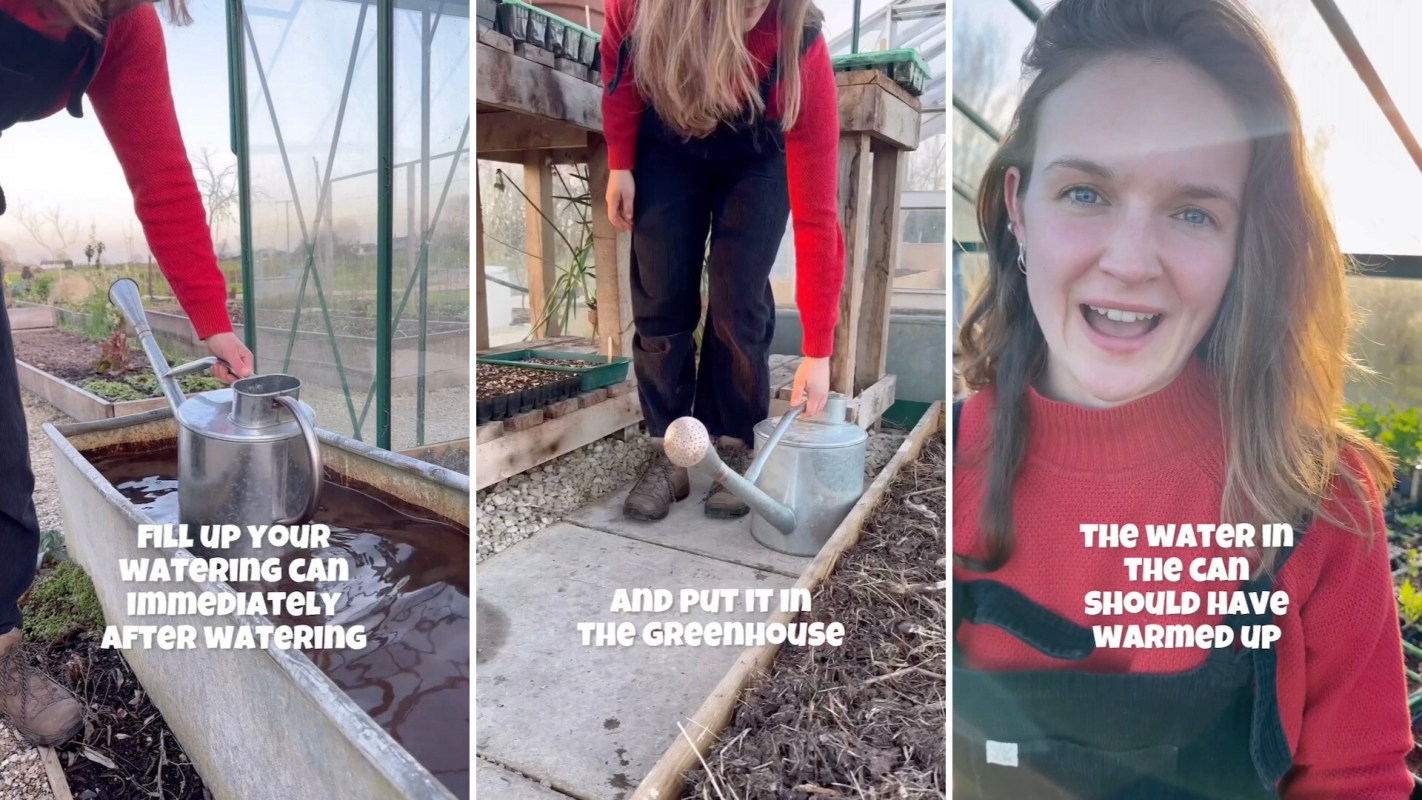Spring has sprung, and it is time to get outside and take advantage of the extra daylight and warming temperatures — especially if you're a gardener.
Gardeners know that this time of year marks the beginning of the growing season. If they haven't already, many will soon begin to nurture seeds and seedlings for their spring gardens.
Gardening influencer Jess Gough (@happy_smallholding) has already begun to germinate her spring seeds.
Among those in her greenhouse are peas, tomatoes, and chili peppers. She explains that these types of seeds are some of the many that require heat to germinate, and she shares an extremely simple and helpful watering tip to ensure your seeds are getting the warmth they need to grow into lush, productive plants.
The scoop
In a video on Instagram, Jess says that watering your seeds with room temperature water can help to ensure more successful germination and seedling growth rates.
The process requires nothing more than a little time and patience. All you need to do is fill up your watering can after watering and place it in your greenhouse. If you don't have a greenhouse, don't worry; you can also use tap water in your home.
"By the time you come around to watering next, the water should have warmed up," Jess explains.
Many seeds germinate better in warm soil — that is why spring is such a popular time to garden. When winter melts into spring, the risk of frost diminishes as sunlight lingers a little longer and it grows warmer with each passing day.
More sunlight increases the opportunity for photosynthesis and higher temperatures thaw the soil, creating a favorable environment for plant growth.
Watering seeds with room-temperature water emulates this seasonal process and accelerates germination and seedling growth. Jess says that watering seeds with cold water cools the soil, which can slow germination and growth.
How it's helping
Tips like this from Jess and other gardening influencers make growing a garden easier and more accessible for everyone.
There are numerous physical, mental, social, money-saving, and environmental benefits to growing one's own produce, so the more people who do, the happier and healthier we and our planet will be.
It doesn't have to cost much to invest in a garden. A $70 gardening investment can yield up to 300 pounds of fresh produce, approximately $600 worth, in a single year.
Plus, homegrown produce reduces carbon pollution. One pound of store-bought produce creates 0.18 pounds of carbon during transportation. So, if you grew 300 pounds of produce at home, you would save about 50 pounds of carbon from entering the atmosphere.
If you are new to gardening, one of the first things you will notice about your homegrown produce is how much better it tastes than store-bought produce. You'll also be consuming more fiber — facilitating bowel movements, weight loss, and lowering cholesterol.
According to this University of Colorado study, when compared to non-gardeners, gardeners who grow their own food consumed approximately 1.4 more grams of fiber every day. That study also found that physical activity increased in gardeners by about 42 minutes weekly.
Growing your own food is incredibly rewarding, too. Not only will you have unlimited access to fresh, delicious produce, but you'll also improve your mood and overall mental health by reducing stress and anxiety.
This benefit is amplified in community gardens, which are an excellent alternative to gardening at home if you don't have the space. Community gardens have many social benefits that you wouldn't get with home gardens, like an increased sense of community, greater subjective well-being, and higher optimism and resilience.
What everyone is saying
Beginner and experienced gardeners were delighted by Jess' tip.
"AMAZING TIP! Never thought of that!" wrote one user.
"Clever!" commented another.
"That is so helpful," typed a thankful user. "I really, really appreciate it!"
Join our free newsletter for easy tips to save more, waste less, and help yourself while helping the planet.









